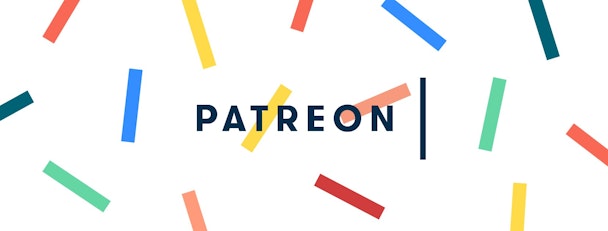Amid swell of support, Patreon explains why it is now 'a lifeline for creators'
Creatives are flooding to fan membership service Patreon to make up for revenues lost during the pandemic. With a public lockdown driving the cancellations of live events, the rescheduling of commissions, and a subsequent freelance drought, a record number of creatives are using the memberships platform to stoke direct fan revenue.

Patreon sees huge pandemic patron spike:'We're a lifeline for creators'
In March, 50,000 new artists joined the platform resulting in an unprecedented spike in patrons (paying fans) of 36% month on month across the US, UK, Canada, Germany, Austalia and Italy. By April, this had evened out to around an extra 25% daily average on February.
This immediate surge from 150,000 to 200,000 creators, and the subsequent spike of those willing to pay for their talent, offers insight into the challenges facing creatives and the nature of fandoms in 2020.
Patreon is now accumulating patrons “faster than at any point in the company’s history”. To date, it boasts more than 4 million patrons.
As for retention, with mass job losses, pay cuts and furloughs threatening the income of supporters, Patreon said: “We’ve seen slightly more pledge deletion, but not nearly enough to offset the increasing numbers of new pledges.”
Ronny Kreiger, general manager Europe of Patreon, opened up on its “mission to fund the creative class”, be it musicians, painters, podcasters, writers, and movie-makers.
“The trends we saw in March and that strongly continue in April show that amid uncertainty, creators are using Patreon to connect with their fans and earn an income directly from the folks who love their work," he told The Drum.
He explained how many creators are now putting out exclusive content, autographed goods and are taking requests on the platform under a tiered benefits system. Others have simply issued pleas to fans for support. In exchange for a monthly fee (often pitched as the equivalent to the cost of 'a coffee or pint’), top fans receive exclusive access, extra content, or a closer look behind-the-scenes.
Revenue diversification
Patreon has proven to be one of the primary means of diversification for the artist in the streaming age, especially those let down by the low yields of advertising income – although some feel threatened by it taking a growing share in exchange for more creator tools.
Since it was founded in 2013 by Jack Conte, of the band Pomplamoose and digital entrepreneur Sam Yam, as a means of establishing ongoing and predictable monthly revenue it has delivered $1bn in revenue to artists.
Now during the pandemic, its role in the digital ecosystem becomes ever more important. It has rolled out a grant for some of the worst affected artists, offered tips and workshops to adapt to the pandemic.
As for how much artists raise from the platform, Patreon doesn't divulge the size of creator fandoms and their income, however, some creators are happy to share these stats. Musician Amanda Palmer is just shy of 14,940 Patrons with support tiered ranging between $1 and $250. When she hits 15,000 supporters she will cover song requests to mark the occasion. Meanwhile, the RedHanded podcast makes $25,878 a month right now off 3,768 patrons. Other titles have had a good guess at working out the top earners too, and what's clear is that there is a broad base of creator making a living there.
Kreiger added: “Patreon has been, is and will continue to be a reliable platform enabling creators to fund their work. Now that live events, concerts and other means of income have been cancelled for the foreseeable future, the combination of Patreon and patrons has become a lifeline for many creators worldwide.”
He claimed that the global creator partnership teams in San Francisco, New York and Berlin have been putting in many extra hours to help ensure new creators can launch swiftly. The workload is up due to the new spike in interest in the service. “As an example, we’ve seen almost twice as many musicians than usual who launched in the month of March alone.”
There's also been a trend of patrons upping their tiers to better support creators.
In the coming months, the firm is expecting strong growth in Europe from its new central European creator partnerships and marketing headquarter in Berlin. The focus will be to roll out multi-language and currency offerings.

